|
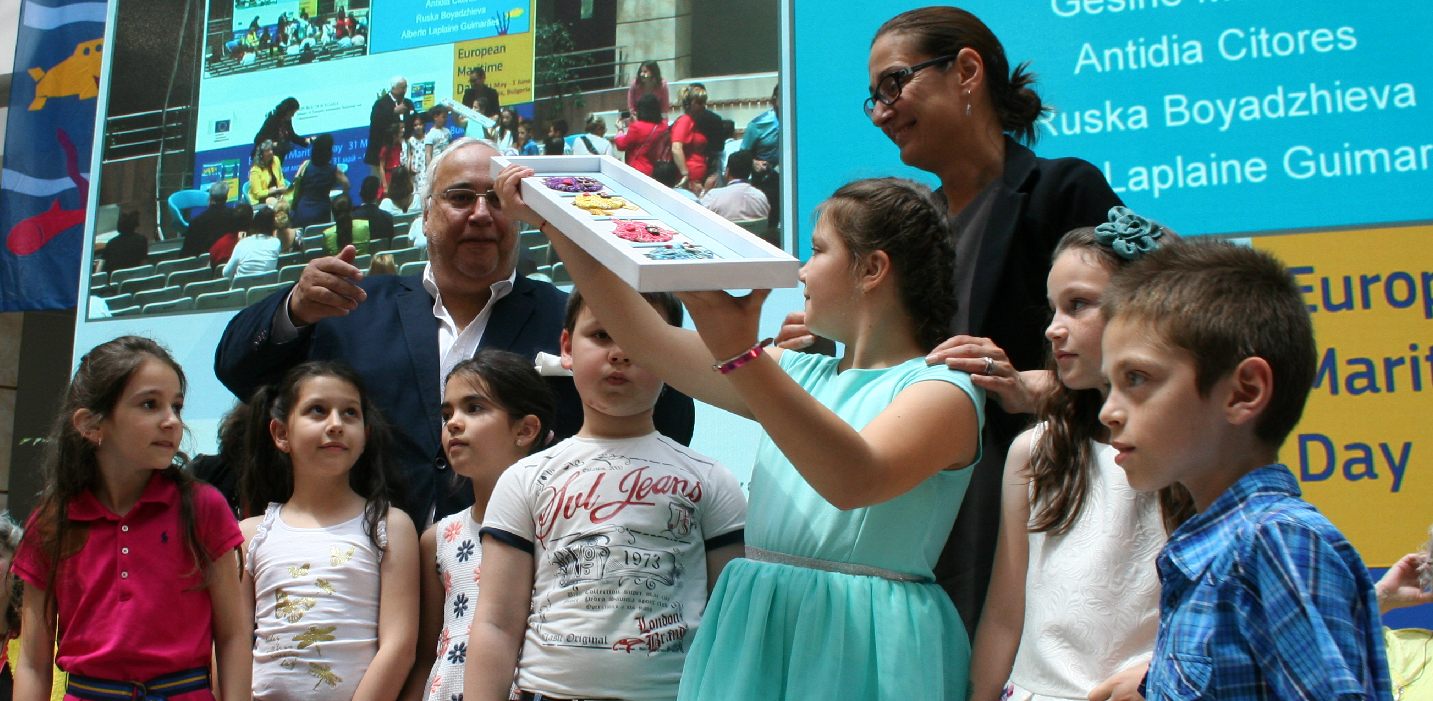
FOR
OUR CHILDREN - The UN sustainability development
goals are
designed to build a better world for next generations to come.
Mankind
has come a long way in a very short time. We are only just
becoming
self-aware in relation to the harm we are causing and the lack
of safety
nets for our future. The SDGs are international aims that are
designed
to repair planet earth to make it fit for purpose in supporting
all life
in a way that ensures the continued survival of species. These
goals address the global challenges we face, including those related to
poverty, inequality, climate, environmental degradation, prosperity,
peace and injustice. The Goals interconnect and in order to leave no one
behind, it
is important that we do our utmost to achieve each Goal and
target by 2030.
UN
SUSTAINABILITY
DEVELOPMENT GOALS
Sustainable Development Goals (SDGs) (or Global Goals for Sustainable Development) are a collection of 17 global goals set by the United Nations General Assembly. The SDGs are part of Resolution 70/1 of the United Nations General Assembly: "Transforming our World: the 2030 Agenda for Sustainable Development." That has been shortened to "2030 Agenda." The goals are broad and interdependent, yet each has a separate list of targets to achieve. Achieving all 169 targets would signal accomplishing all 17 goals. The SDGs cover social and economic development issues including poverty, hunger, health, education, global warming, gender equality, water, sanitation,
energy, urbanization, environment and social justice.
Paragraph 54 of the United Nations General Assembly Resolution A/RES/70/1 of 25 September 2015 contains the goals and
targets. The UN-led process involved its 193 Member States and global civil society. The resolution is a broad intergovernmental agreement that acts as the Post-2015 Development Agenda. The SDGs build on the principles agreed upon in Resolution A/RES/66/288, entitled "The Future We
Want". This was a non-binding document released as a result of Rio+20 Conference held in 2012.
Implementation as of 2016 is described as "Localizing the SDGs" to highlight the role of local institutions and local actors. Regional efforts included agreements like the Baltic 2030 Action Plan. Some remain pessimistic about the potential for achieving the SDGs, especially because of estimates of the cost of achieving all 17. However, progress had been reported by 2018. For example, fewer African children under the age of 5 are suffering from stunting and wasting. However, the same study concluded that it is unlikely there will be an end to malnutrition by 2030.
MILLENNIUM
DEVELOPMENT GOALS (MDGs)
The SDGs were developed to succeed the Millennium Development Goals (MDGs) which ended in 2015. The gaps and shortcomings of MDG Goal 8 (To develop a global partnership for development) led to identifying a problematic "donor-recipient" relationship. Instead, the new SDGs favor collective action by all countries.
A commentary in The Economist in 2015 argued that 169 targets for the SDGs is too many, describing them as "sprawling, misconceived" and "a mess" compared to the eight MDGs used previously. The MDGs were about development while the SDGs are about sustainable development. Finally, the MDGs used a sole approach to problems, while the SDGs take into account the inter-connectedness of all the problems.
Whilst the MDGs were strongly criticized by many NGOs as only dealing with the problems, the SDGs deal with the causes of the problems.
BAN
KI-MOON
Ban Ki-moon, the
United Nations Secretary-General from 2007 to 2016, has stated that: "We don’t have plan B because there is no planet B!." This thought has guided the development of the Sustainable Development Goals (SDGs).
Negotiations on the Post-2015 Development Agenda began in January 2015 and ended in August 2015. A final document was adopted at the UN Sustainable Development Summit in September 2015 in New York City, USA.
On 25 September 2015, the 193 countries of the UN General Assembly adopted the 2030 Development Agenda titled "Transforming our world: the 2030 Agenda for Sustainable Development". This agenda has 92 paragraphs. Paragraph 51 outlines the 17 Sustainable Development Goals and the associated 169 targets.
UN agencies which are part of the United Nations Development Group decided to support an independent campaign to communicate the new SDGs to a wider audience. This campaign, "Project Everyone," had the support of corporate institutions and other international organizations.
Using the text drafted by diplomats at the UN level, a team of communication specialists developed icons for every goal. They also shortened the title "The 17 Sustainable Development Goals" to "Global Goals/17#GlobalGoals," then ran workshops and conferences to communicate the Global Goals to a global audience.
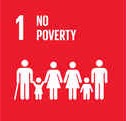   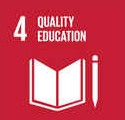  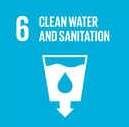
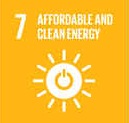  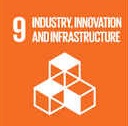 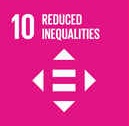 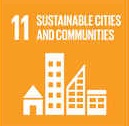 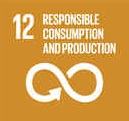
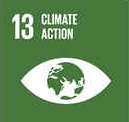  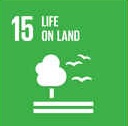 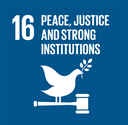 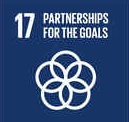 
Goal 1: No poverty
"End poverty in all its forms everywhere."
Extreme poverty has been cut by more than half since 1990. Still, more than 1 in 5 people live on less than the target figure of US$1.25 per day. That target may not be adequate for human subsistence, however. Some suggest it may be necessary to raise the poverty line figure to as high as $5 per day. Poverty is more than the lack of income or resources. People live in poverty if they lack basic services such as healthcare, security, and education. They also experience hunger, social discrimination, and exclusion from decision-making processes.
Children make up the majority – more than half – of those living in extreme poverty. In 2013, an estimated 385 million children lived on less than US$1.90 per day. Still, these figures are unreliable due to huge gaps in data on the status of children worldwide. On average, 97 percent of countries have insufficient data to determine the state of impoverished children and make projections towards SDG Goal 1, and 63 percent of countries have no data on child poverty at all.
Gender inequality plays a large role in perpetuating poverty and its risks. Women face potentially life-threatening risks from early pregnancy and frequent pregnancies. This can result in lost hope for an education and for a better income. Poverty affects age groups differently, with the most devastating effects experienced by children. It affects their
education, health, nutrition, and security, impacting emotional and spiritual development.
Achieving Goal 1 is hampered by growing inequality, increasingly fragile statehood, and the impacts of
climate change.
Goal 2: Zero hunger
"End hunger, achieve food security and improved nutrition, and promote sustainable agriculture".
Goal 2 states that by 2030 we should end hunger and all forms of malnutrition. This would be accomplished by doubling agricultural productivity and incomes of small-scale food producers (especially women and indigenous peoples), by ensuring sustainable food production systems, and by progressively improving land and soil quality.
Agriculture is the single largest employer in the world, providing livelihoods for 40% of the global population. It is the largest source of income for poor rural households. Women make up about 43% of the agricultural labor force in developing countries, and over 50% in parts of Asia and Africa. However, women own only 20% of the land.
Other targets deal with maintaining genetic diversity of seeds, increasing access to land, preventing trade restriction and distortions in world agricultural markets to limit extreme food price volatility, eliminating waste with help from the International Food Waste Coalition, and ending malnutrition and undernutrition of children.
Globally, 1 in 9 people are undernourished, the vast majority of whom live in developing countries. Undernutrition causes wasting or severe wasting of 52 million children worldwide, and contributes to nearly half (45%) of deaths in children under five – 3.1 million children per year. Chronic malnutrition, which affects an estimated 155 million children worldwide, also stunts children's brain and physical development and puts them at further risk of death, disease, and lack of success as adults. As of 2017, only 26 of 202 UN member countries are on track to meet the SDG target to eliminate undernourishment and malnourishment, while 20 percent have made no progress at all and nearly 70 percent have no or insufficient data to determine their progress.
A report by the International Food Policy Research Institute (IFPRI) of 2013 stated that the emphasis of the SDGs should not be on ending poverty by 2030, but on eliminating hunger and under-nutrition by 2025. The assertion is based on an analysis of experiences in China, Vietnam, Brazil, and Thailand. Three pathways to achieve this were identified: 1) agriculture-led; 2) social
protection - and nutrition - intervention-led; or 3) a combination of both of these approaches.
Goal 3: Good health and well-being for people
"Ensure healthy lives and promote well-being for all at all ages."
Significant strides have been made in increasing life expectancy and reducing some of the common killers associated with child and maternal mortality. Between 2000 and 2016, the worldwide under-five mortality rate decreased by 47 percent (from 78 deaths per 1,000 live births to 41 deaths per 1,000 live births). Still, the number of children dying under age five is extremely high: 5.6 million in 2016 alone. Newborns account for a growing number of these deaths, and poorer children are at the greatest risk of under-5 mortality due to a number of factors. SDG Goal 3 aims to reduce under-five mortality to at least as low as 25 per 1,000 live births. But if current trends continue, more than 60 countries will miss the SDG neonatal mortality target for 2030. About half of these countries would not reach the target even by 2050.
Goal 3 also aims to reduce maternal mortality to less than 70 deaths per 100,000 live births. Though the maternal mortality ratio declined by 37 percent between 2000 and 2015, there were approximately 303,000 maternal deaths worldwide in 2015, most from preventable causes. In 2015, maternal health conditions were also the leading cause of death among girls aged 15-19.
Data for girls of greatest concern – those aged between 10-14 - is currently unavailable. Key strategies for meeting SDG Goal 3 will be to reduce adolescent pregnancy (which is strongly linked to gender equality), provide better data for all women and girls, and achieve universal coverage of skilled birth attendants.
Similarly, progress has been made on increasing access to clean water and sanitation and on reducing malaria, tuberculosis, polio, and the spread of HIV/AIDS. From 2000-2016, new HIV infections declined by 66 percent for children under 15 and by 45 percent among adolescents aged 15-19. However, current trends mean that 1 out of 4 countries still won't meet the SDG target to end AIDS among children under 5, and 3 out of 4 will not meet the target to end AIDS among adolescents. Additionally, only half of women in developing countries have received the health care they need, and the need for family planning is increasing exponentially as the population grows. While needs are being addressed gradually, more than 225 million women have an unmet need for contraception.
Goal 3 aims to achieve universal health coverage, including access to essential medicines and vaccines. It proposes to end the preventable death of newborns and children under 5 and to end epidemics such as AIDS, tuberculosis, malaria, and water-borne diseases, for example. 2016 rates for the third dose of the pertussis vaccine (DTP3) and the first dose of the measles vaccine (MCV1) reached 86 percent and 85 percent, respectively. Yet about 20 million children did not receive DTP3 and about 21 million did not receive MCV1. Around 2 in 5 countries will need to accelerate progress in order to reach SDG targets for immunization.
Attention to health and well-being also includes targets related to the prevention and treatment of substance abuse, deaths and injuries from traffic accidents and from hazardous chemicals and air, water and soil pollution and contamination.

Goal 4: Quality education
"Ensure inclusive and equitable quality education and promote lifelong learning opportunities for all."
Major progress has been made in access to education, specifically at the primary school level, for both boys and girls. Still, at least 22 million children in 43 countries will miss out on pre-primary education unless the rate of progress doubles.
Access does not always mean quality of education or completion of primary school. 103 million youth worldwide still lack basic literacy skills, and more than 60 percent of those are women. In one out of four countries, more than half of children failed to meet minimum math proficiency standards at the end of primary school, and at the lower secondary level, the rate was 1 in 3 countries. Target 1 of Goal 4 is to ensure that, by 2030, all girls and boys complete free, equitable, and quality primary and secondary education.
Additionally, progress is difficult to track: 75 percent of countries have no or insufficient data to track progress towards SDG Goal 4 targets for learning outcomes (target 1), early childhood education (target 2), and effective learning
environments. Data on learning outcomes and pre-primary school are particularly scarce; 70 percent and 40 percent of countries lack adequate data for these targets, respectively. This makes it hard to analyze and identify the children at greatest risk of being left behind.
Goal 5: Gender equality
"Achieve gender equality and empower all women and girls."
According to the UN, "gender equality is not only a fundamental human right, but a necessary foundation for a peaceful, prosperous and sustainable
world." Providing women and girls with equal access to education, health care, decent work, and representation in political and economic decision-making processes will nurture sustainable economies and benefit societies and humanity at large. A record 143 countries guaranteed equality between men and women in their constitutions as of 2014. However, another 52 had not taken this step. In many nations, gender discrimination is still woven into the fabric of legal systems and social norms. Even though SDG5 is a stand-alone goal, other SDGs can only be achieved if the needs of women receive the same attention as the needs of men. Issues unique to women and girls include traditional practices against all women and girls in the public and private spheres, such as female genital mutilation.
Child marriage has declined over the past decades, yet there is no region that is currently on track to eliminate the practice and reach SDG targets by 2030. If current trends continue, between 2017 and 2030, 150 million girls will be married before they turn 18. Though child marriages are four times higher among the poorest than the wealthiest in the world, most countries need to accelerate progress among both groups in order to reach the SDG Goal 5 target to eliminate child marriage by 2030.
Achieving gender equality will require enforceable legislation that promotes empowerment of all women and girls and requires secondary education for all girls. The targets call for an end to gender discrimination and for empowering women and girls through technology Some have advocated for "listening to girls". The assertion is that the SDGs can deliver transformative change for girls only if girls are consulted. Their priorities and needs must be taken into account. Girls should be viewed not as beneficiaries of change, but as agents of change. Engaging women and girls in the implementation of the SDGs is crucial.
The World Pensions Council (WPC) has insisted on the transformational role gender-diverse that boards can play in that regard, predicting that 2018 could be a pivotal year, as “more than ever before, many UK and European Union pension trustees speak enthusiastically about flexing their fiduciary muscles for the UN’s Sustainable Development Goals, including SDG5, and to achieve gender equality and empower all women and girls.”
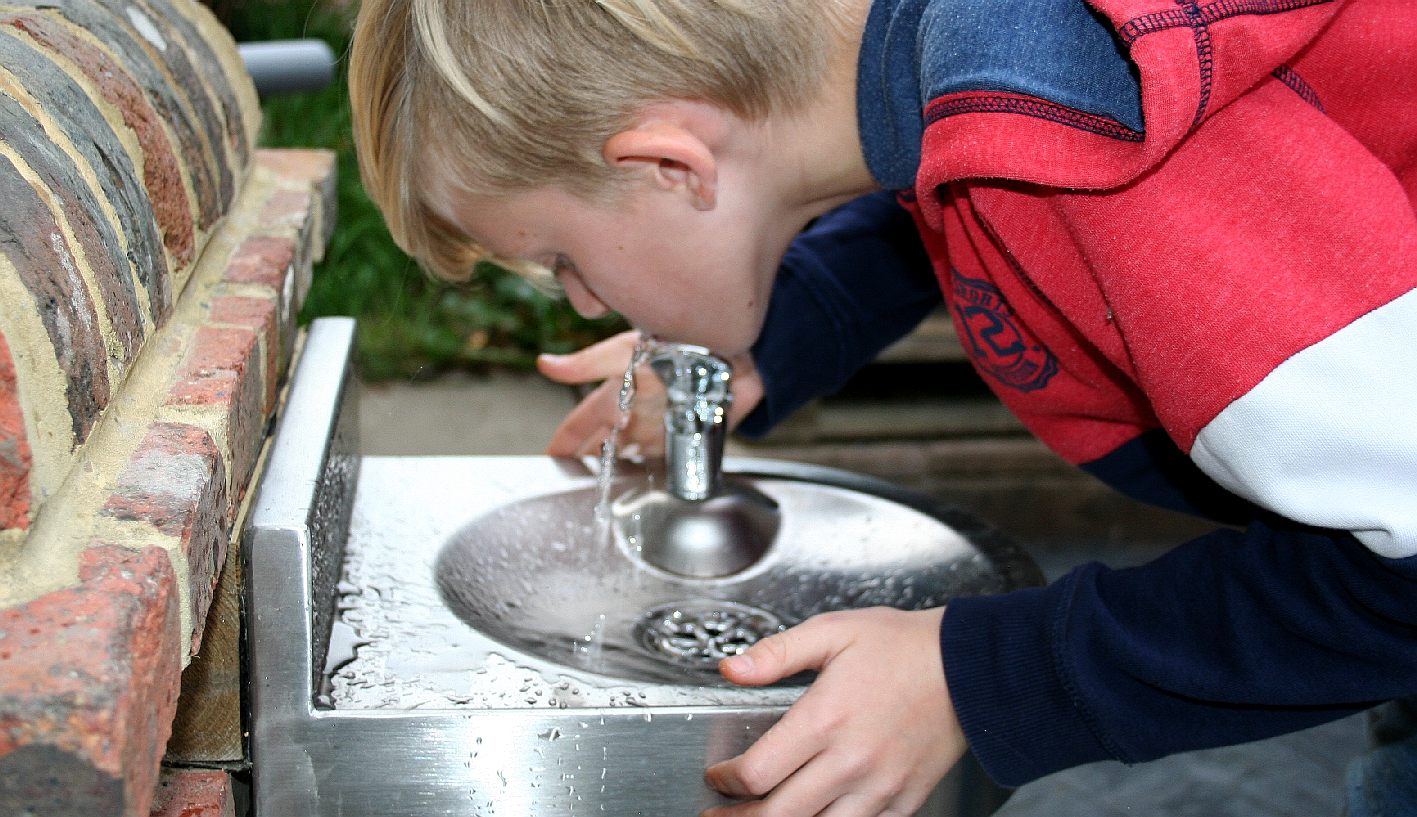
FOUNTAIN
OF YOUTH, OCTOBER 2018 - This fountain is fed from an old well at
Herstmonceux. Anyone may imbibe the health giving qualities of this
natural water supply, such as ramblers and visitors to Lime Park. It is
a criminal offence with unlimited fines for any person who pollutes
groundwater. By this means wells such as this last surviving working
example in the village are protected in law. Alternative water supplies
from wells are needed as reserves in case of pollution of reservoirs and
other (aquifers) supplies. Bottled water being a last resort in
emergencies. That said, there is a planning application to build around
28 houses within a 100 meter radius of the well, where this historic water
supply is below the height of the proposed housing that will of course
poison the groundwater from pesticides, unless conditions can be applied to
prevent use of chemicals in the adjacent field, or the developers: Clarion
Group, Latimer
Developments and Thakeham
Homes can be persuaded to reposition their housing to avoid potential
prosecution should a groundwater incident occur.
Goal 6: Clean water and sanitation
"Ensure availability and sustainable management of water and sanitation for all."
The Sustainable Development Goal Number 6 (SDG6) has eight targets and 11 indicators that will be used to monitor progress toward the targets. Most are to be achieved by the year 2030. One is targeted for
2020.
The first three targets relate to drinking water supply and sanitation. Worldwide, 6 out of 10 people lack safely managed sanitation services, and 3 out of 10 lack safely managed water services. Safe drinking water and hygienic toilets protect people from disease and enable societies to be more productive economically. Attending
school and work without disruption is critical to successful education and successful employment. Therefore, toilets in schools and work places are specifically mentioned as a target to measure. "Equitable sanitation" calls for addressing the specific needs of women and girls and those in vulnerable situations, such as the elderly or people with disabilities. Water sources are better preserved if open defecation is ended and sustainable sanitation systems are implemented.
Ending open defecation will require provision of toilets and sanitation for 2.6 billion people as well as behavior change of the users.[40] This will require cooperation between governments, civil society, and the private sector.
The main indicator for the sanitation target is the "Proportion of population using safely managed sanitation services, including a hand-washing facility with soap and water". However, as of 2017, two-thirds of countries lacked baseline estimates for SDG indicators on hand washing, safely managed drinking water, and sanitation services. From those that were available, the Joint Monitoring Programme (JMP) found that 4.5 billion people currently do not have safely managed sanitation. If we are to meet SDG targets for sanitation by 2030, nearly one-third of countries will need to accelerate progress to end open defecation including Brazil, China, Ethiopia, India, Indonesia, Nigeria, and Pakistan.
The Sustainable Sanitation Alliance (SuSanA) has made it its mission to achieve SDG6. SuSanA's position is that the SDGs are highly interdependent. Therefore, the provision of clean water and sanitation for all is a precursor to achieving many of the other SDGs.
Goal 7: Affordable and clean energy
"Ensure access to affordable, reliable, sustainable and modern energy for all."
Targets for 2030 include access to affordable and reliable energy while increasing the share of renewable energy in the global energy mix. This would involve improving energy efficiency and enhancing international cooperation to facilitate more open access to clean energy technology and more investment in clean energy infrastructure. Plans call for particular attention to infrastructure support for the least developed countries, small islands and land-locked developing countries.
As of 2017, only 57 percent of the global population relies primarily on clean fuels and technology, falling short of the 95 percent target.
Goal 8: Decent work and economic growth
"Promote sustained, inclusive and sustainable economic growth, full and productive employment and decent work for all."
World Pensions Council (WPC) development economists have argued that the twin considerations of long-term economic growth and infrastructure investment weren’t prioritized enough. Being prioritized as number 8 and number 9 respectively was considered a rather "mediocre ranking and defies common sense"
For the least developed countries, the economic target is to attain at least a 7 percent annual growth in gross domestic product (GDP). Achieving higher productivity will require diversification and upgraded technology along with innovation, entrepreneurship, and the growth of small- and medium-sized enterprises (SMEs). Some targets are for 2030; others are for 2020. The target for 2020 is to reduce youth unemployment and operationalize a global strategy for youth employment. Implementing the Global Jobs Pact of the International Labour Organization is also mentioned.
By 2030, the target is to establish policies for sustainable tourism that will create jobs. Strengthening domestic financial institutions and increasing Aid for Trade support for developing countries is considered essential to economic development. The Enhanced Integrated Framework for Trade-Related Technical Assistance to Least Developed Countries is mentioned as a method for achieving sustainable economic development.
Goal 9: Industry, Innovation, and Infrastructure
"Build resilient infrastructure, promote inclusive and sustainable industrialization, and foster innovation".
Manufacturing is a major source of employment. In 2016, the least developed countries had less "manufacturing value added per capita". The figure for
Europe and North America amounted to US$4,621, compared to about $100 in the least developed
countries. The manufacturing of high products contributes 80 percent to total manufacturing output in industrialized economies but barely 10 percent in the least developed countries.
Mobile-cellular signal coverage has improved a great deal. In previously "unconnected" areas of the globe, 85 percent of people now live in covered areas. Planet-wide, 95 percent of the population is covered.
Goal 10: Reducing inequalities
"Reduce income inequality within and among countries."
One target is to reduce the cost of exporting goods from least developed countries. "Duty-free treatment" has expanded. As of 2015, 65 percent of products coming from the least developed countries were duty-free, as compared to 41 percent in 2005.
The target of 3 percent was established as the cost that international migrant workers would pay to send money home (known as remittances). However, post offices and money transfer companies currently charge 6 percent of the amount remitted. Worse, commercial banks charge 11 percent. Prepaid cards and mobile money companies charge 2 to 4 percent, but those services were not widely available as of 2017 in typical "remittance corridors."
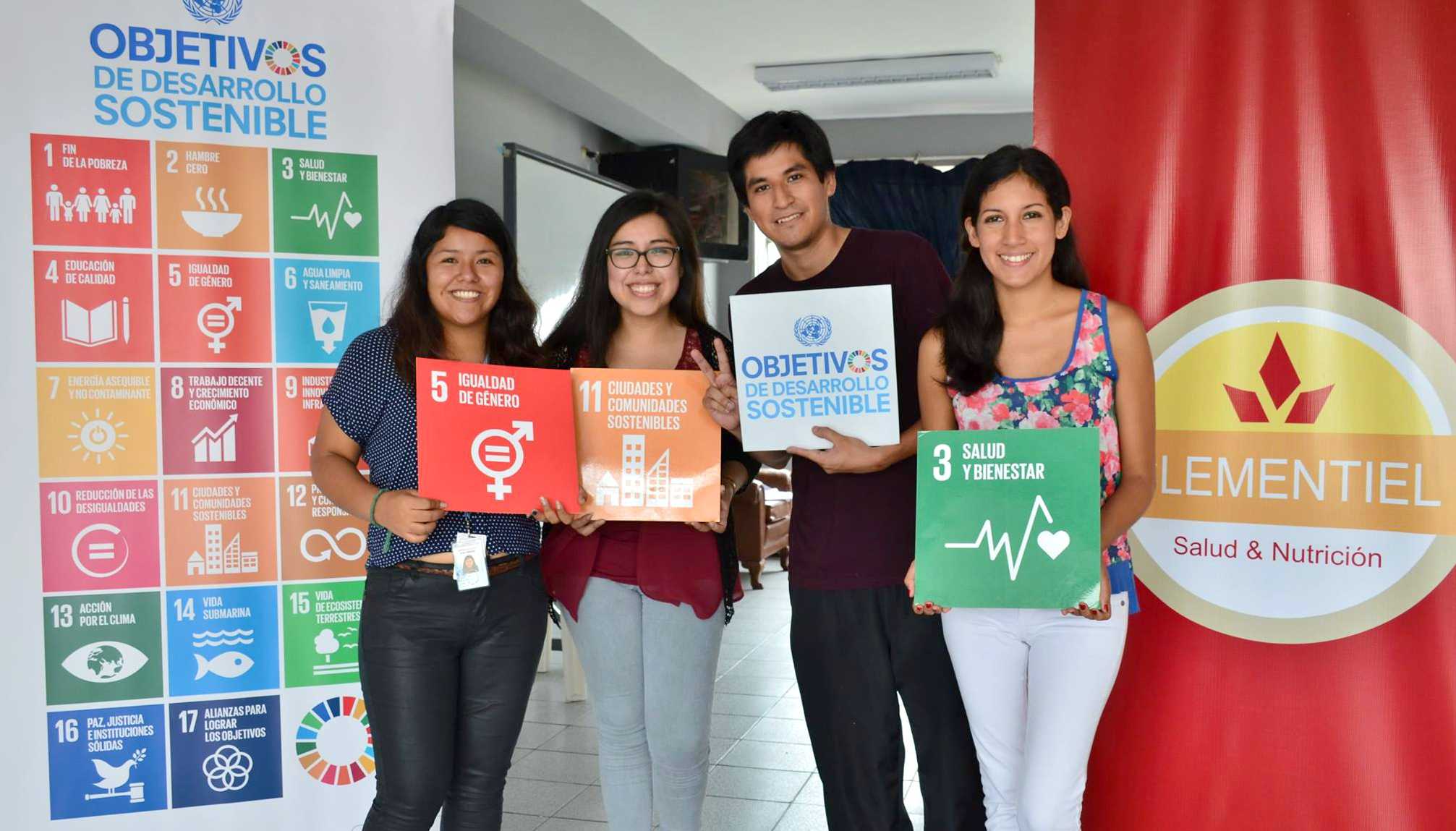
Goal 11: Sustainable cities and communities
"Make cities and human settlements inclusive, safe, resilient, and sustainable."
The target for 2030 is to ensure access to safe and affordable housing. The indicator named to measure progress toward this target is the proportion of urban population living in slums or informal settlements. Between 2000 and 2014, the proportion fell from 39 percent to 30 percent. However, the absolute number of people living in slums went from 792 million in 2000 to an estimated 880 million in 2014. Movement from rural to urban areas has accelerated as the population has grown and better housing alternatives are available.
Goal 12: Responsible consumption and production
"Ensure sustainable consumption and production patterns."
The targets of Goal 12 include using eco-friendly production methods and reducing the amount of waste. By 2030, national recycling rates should increase, as measured in tons of material recycled. Further, companies should adopt sustainable practices and publish sustainability reports.
Goal 13: Climate action
"Take urgent action to combat climate change and its impacts by regulating emissions and promoting developments in renewable energy."
The UN discussions and negotiations identified the links between the post-2015 SDG process and the Financing for Development process that concluded in Addis Ababa in July 2015 and the COP 21 Climate Change conference in Paris in December 2015.
In May 2015, a report concluded that only a very ambitious climate deal in Paris in 2015 could enable countries to reach the sustainable development goals and targets. The report also states that tackling climate change will only be possible if the SDGs are met. Further, economic development and climate change are inextricably linked, particularly around poverty, gender equality, and energy. The UN encourages the public sector to take initiative in this effort to minimize negative impacts on the environment.
This renewed emphasis on climate change mitigation was made possible by the partial Sino-American convergence that developed in 2015-2016, notably at the UN COP21 summit (Paris) and ensuing G20 conference (Hangzhou).
As one of the regions most vulnerable to the unprecedented effects of climate change, the Asia-Pacific region needs more Public-Private Partnerships (PPPs) to successfully implement its sustainable development initiatives.
Goal 14: Life below water
"Conserve and sustainably use the oceans, seas and marine resources for sustainable development."
Oceans cover 71 percent of the Earth's surface. They are essential for making the planet livable. Rainwater, drinking water and climate are all regulated by ocean temperatures and currents. Over 3 billion people depend on marine life for their livelihood. Oceans absorb 30 percent of all
carbon dioxide produced by humans.
The oceans contain more than 200,000 identified species, and there might be thousands of species that are yet to be discovered. Oceans are the world's largest sources of protein. However, there has been a 26 percent increase in acidification since the industrial revolution. A full 30 percent of marine habitats have been destroyed, and 30 percent of the world's
fish stocks are over-exploited. Marine pollution has reached shocking levels; each minute, 15 tons of plastic are released into the oceans. 20 percent of all coral reefs have been destroyed irreversibly, and another 24 percent are in immediate risk of collapse. Approximately 1 million sea birds, 100 000 marine mammals, and an unknown number of fish are harmed or die annually due to marine pollution caused by humans. It has been found that 95 percent of fulmars in
Norway have plastic parts in their guts.
Microplastics are another form of marine pollution.
Individuals can help the oceans by reducing their energy consumption and their use of plastics. Nations can also take action. In Norway, for instance, citizens, working through a web page called finn.no, can earn money for picking up plastic on the beach. Several countries, including Kenya, have banned the use of
plastic bags for retail purchases.
Improving the oceans contributes to poverty reduction, as it gives low-income families a source of income and healthy food. Keeping beaches and ocean water clean in less developed countries can attract tourism, as stated in Goal 8, and reduce poverty by providing more employment.
The targets include preventing and reducing marine pollution and acidification, protecting marine and coastal ecosystems, and regulating
fishing. The targets also call for an increase in scientific knowledge of the oceans.
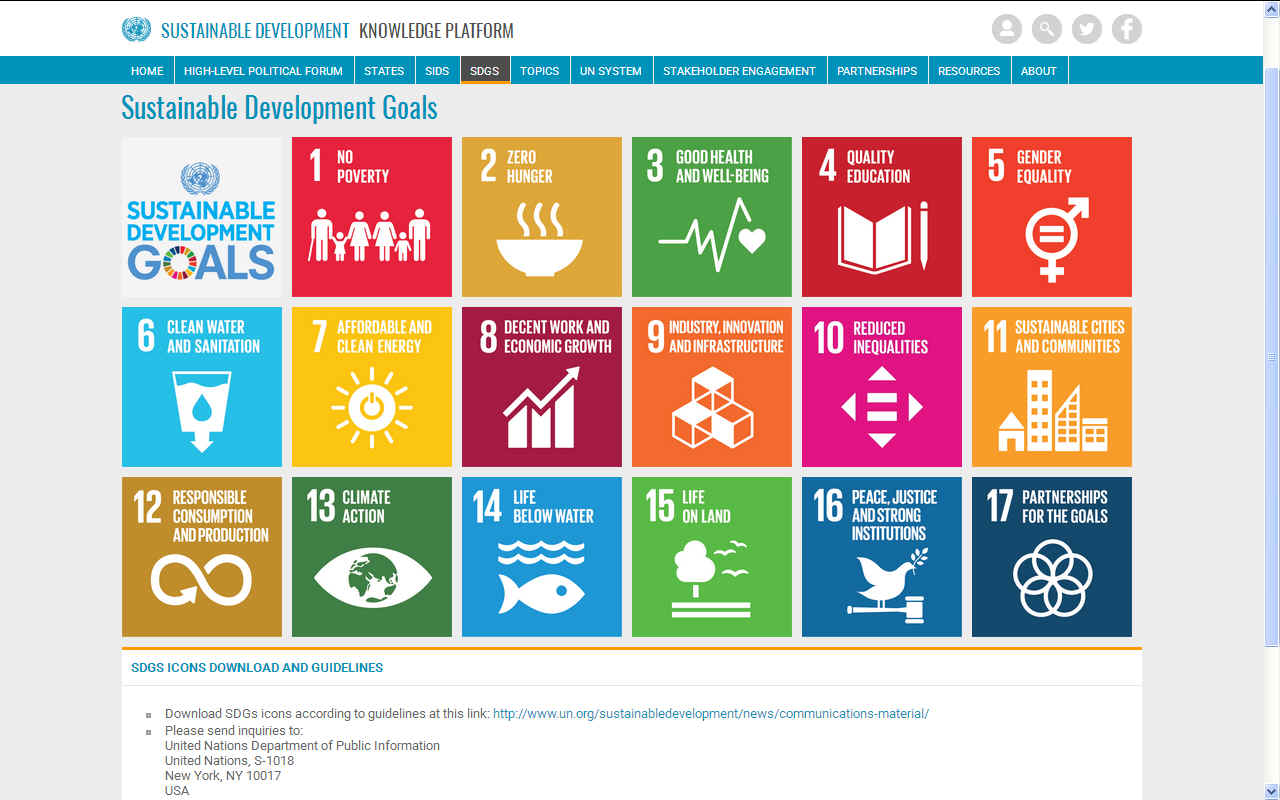
Goal 15: Life on land
"Protect, restore and promote sustainable use of terrestrial ecosystems, sustainably manage forests, combat desertification, and halt and reverse land degradation and halt biodiversity loss."
This goal articulates targets for preserving biodiversity of forest, desert, and mountain eco-systems, as a percentage of total land mass. Achieving a "land degradation-neutral world" can be reached by restoring degraded forests and land lost to drought and flood. Goal 15 calls for more attention to preventing invasion of introduced species and more protection of endangered species.
The Mountain Green Cover Index monitors progress toward target 15.4, which focuses on preserving mountain ecosystems. The index is named as the indicator for target 15.4. Similarly, the Red Index (Red List Index or RLI) will fill the monitoring function for biodiversity goals by documenting the trajectory of endangered species. Animal extinction is a growing problem.
Goal 16: Peace, justice and strong institutions
"Promote peaceful and inclusive societies for sustainable development, provide access to justice for all and build effective, accountable and inclusive institutions at all levels."
Reducing violent crime, sex trafficking, forced labor, and child abuse are clear global goals. The International Community values peace and justice and calls for stronger judicial systems that will enforce laws and work toward a more peaceful and just society. By 2017, the UN could report progress on detecting victims of trafficking. More women and girls than men and boys were victimized, yet the share of women and girls has slowly declined (see also violence against women). In 2004, 84 percent of victims were females and by 2014 that number had dropped to 71 percent. Sexual exploitation numbers have declined, but forced labor has increased.
The
UN needs to be careful that Noble Cause Corruption does not swing
exploitation objectives the other way, where in the UK a man may be
convicted just on the say-so of a woman without any evidence whatsoever as
to an actual assault, courtesy of the Sexual Offences Act 2003 and David
Blunkett. Such examples of laws that prevent Article
6 fairness in trials should be banned, just as much as laws and
enforcement resources should be in place to prevent exploitation on women.
The
situation is just as bad in the United
States of America where Hollywood has gone crazy over women being
exploited by men in films and television. Granted that exploitation does
occur, there should be strict limits as to reporting such incidents to give
those being accused when it is much too late to secure evidence to disprove
allegations years after any claimed event.
Unfortunately,
the European Court of Human Rights is lackluster in refusing to accept cases
claiming that there is a national remedy, when in fact there is no such
thing in the England for example, where there is no right of appeal and the Criminal
Cases Review Commission operate in a discriminatory manner, supported by
the Courts, where it was held in one case that this potentially corrupted
organisation could "take a view." That is of course an Article
14 violation. Such discriminatory practices must be stamped out and a
level playing field restored, no matter how well connected any complainant.
In the case cited the family making the allegation had masonic
connections, making their claims after the accused had called of an
engagement. In this case a man was convicted of rape
and sent to prison despite the fact that the girl who was coached by social
services and the police, was still a virgin
and a diary
that was admitted late in veiled manner proved that there was no opportunity
as had been claimed. This vital information was denied to the jury finding
the defendant guilty, as was the fact that the mother of the complainant was
a serial fraudster. The police
station was just 100 yards from the masonic lodge, with many officers of
this, publicly reported, corrupt force following the murder of James
Ashley, having connections thereto.
One target is to see the end to sex trafficking, forced labor, and all forms of violence against and torture of children. However, reliance on the indicator of "crimes reported" makes monitoring and achieving this goal challenging. For instance, 84 percent of countries have no or insufficient data on violent punishment of children. Of the data available, it is clear that violence against children by their caregivers remains pervasive: Nearly 8 in 10 children aged 1 to 14 are subjected to violent discipline on a regular basis (regardless of income), and no country is on track to eliminate violent discipline by 2030.
SDG 16 also targets universal legal identity and birth registration, ensuring the right to a name and nationality, civil rights, recognition before the law, and access to justice and social services. With more than a quarter of children under 5 unregistered worldwide as of 2015, about 1 in 5 countries will need to accelerate progress to achieve universal birth registration by 2030.
Goal 17: Partnerships for the goals
"Strengthen the means of implementation and revitalize the global partnership for sustainable development.“
Increasing international cooperation is seen as vital to achieving each of the 16 previous goals. Goal 17 is included to assure that countries and organizations cooperate instead of compete. Developing multi-stakeholder partnerships to share knowledge, expertise, technology, and financial support is seen as critical to overall success of the SDGs. Public-private partnerships that involve civil societies are specifically mentioned.

LINKS
& REFERENCE
https://sustainabledevelopment.un.org/sdgs
https://www.un.org/sustainabledevelopment/sustainable-development-goals/
https://www.un.org/sustainabledevelopment/globalpartnerships/
https://www.un.org/sustainabledevelopment/peace-justice/
https://www.un.org/sustainabledevelopment/biodiversity/
https://www.un.org/sustainabledevelopment/oceans/
https://www.un.org/sustainabledevelopment/climate-change-2/
https://www.un.org/sustainabledevelopment/sustainable-consumption-production/
https://www.un.org/sustainabledevelopment/cities/
https://www.un.org/sustainabledevelopment/inequality/
https://www.un.org/sustainabledevelopment/infrastructure-industrialization/
https://www.un.org/sustainabledevelopment/economic-growth/
https://www.un.org/sustainabledevelopment/water-and-sanitation/
https://www.un.org/sustainabledevelopment/energy/
https://www.un.org/sustainabledevelopment/gender-equality/
https://www.un.org/sustainabledevelopment/education/
https://www.un.org/sustainabledevelopment/health/
https://www.un.org/sustainabledevelopment/hunger/
https://www.un.org/sustainabledevelopment/poverty/
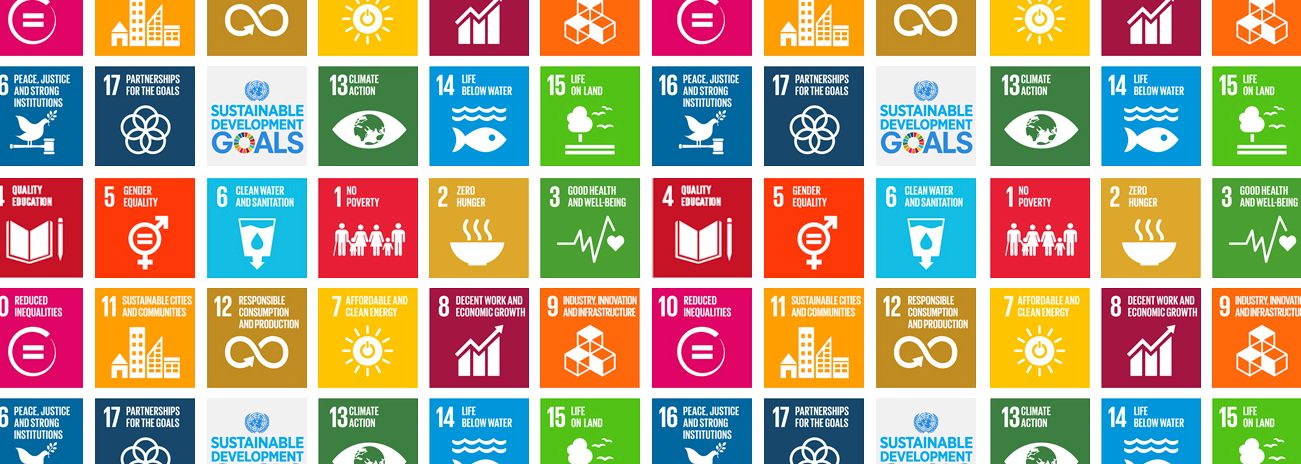
|
























